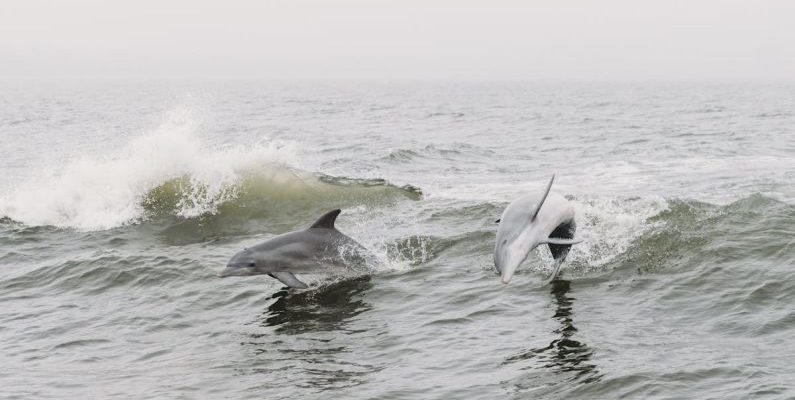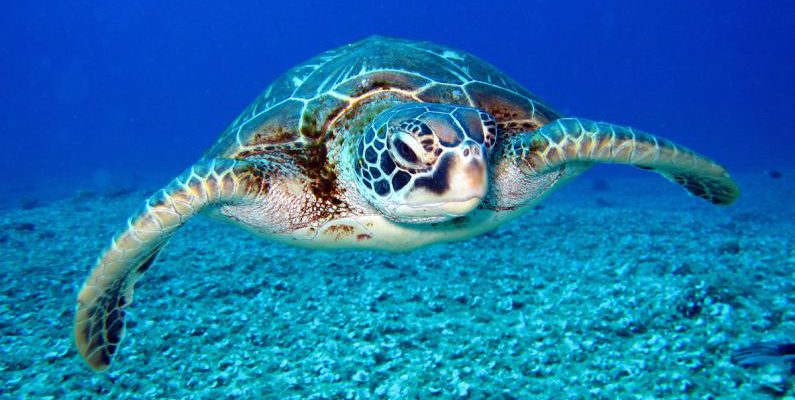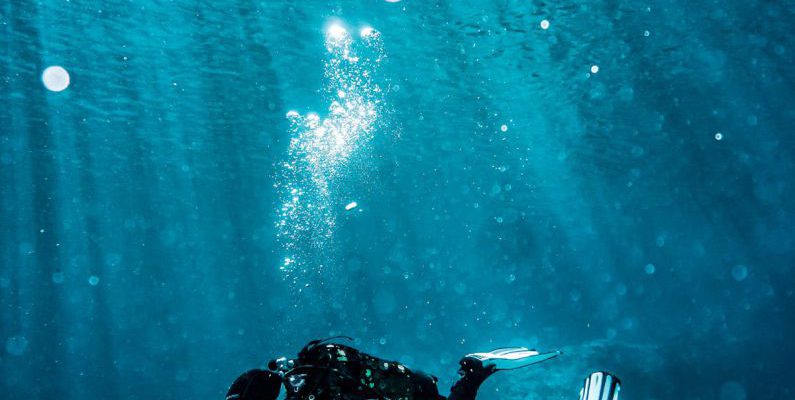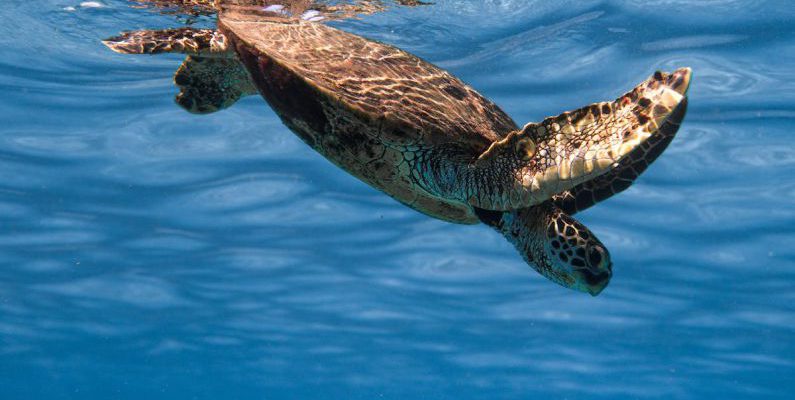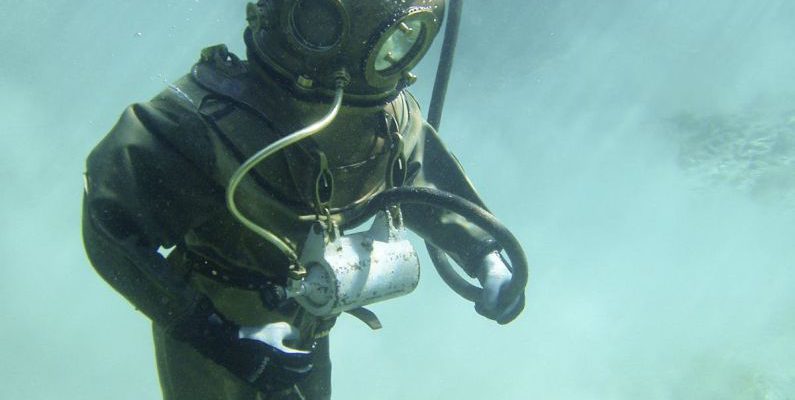Gliding effortlessly through the crystal-clear waters of the ocean, stingrays are a sight to behold. These graceful creatures, with their sleek bodies and gentle movements, captivate all who have the privilege of witnessing their underwater dance. For those who dare to venture beneath the surface and dive into the depths of the sea, encountering stingrays in their natural habitat is an experience like no other. From the moment you spot these majestic creatures to the exhilarating moments spent swimming alongside them, diving with stingrays is an unforgettable adventure that will leave you in awe of the wonders of the ocean.
Author: diveholidayisle
Diving is an exhilarating and adventurous activity that allows individuals to explore the beauty of the underwater world. However, it also comes with inherent risks that must be managed effectively to ensure a safe and enjoyable experience. One essential tool that every diver should utilize is a dive checklist. Dive checklists play a crucial role in ensuring that all necessary equipment is in proper working order and that important safety procedures are followed before, during, and after a dive. In this article, we will explore the importance of dive checklists and provide tips on how to use them effectively to enhance your diving experience.
**Why Dive Checklists are Essential**
Dive checklists are designed to help divers systematically go through important pre-dive, in-dive, and post-dive checks to ensure that nothing is overlooked. By following a standardized checklist, divers can reduce the risk of equipment failure, prevent accidents, and ensure that safety protocols are followed consistently. Whether you are a novice diver or a seasoned professional, using a dive checklist can help you stay organized and focused, especially in high-pressure situations underwater.
**Pre-Dive Checklist**
Before entering the water, it is crucial to conduct a thorough pre-dive checklist to ensure that all equipment is functioning correctly and that all necessary items are in place. Some essential items to include in your pre-dive checklist are:
- Check your tank pressure and ensure it is filled to the required level.
- Inspect your regulator, gauges, and other life-support equipment for any signs of damage or malfunction.
- Verify that your dive computer is working properly and set to the correct settings.
- Check your buoyancy compensator device (BCD) for leaks and proper inflation.
- Ensure that your mask, fins, and snorkel are in good condition and fit comfortably.
By systematically going through these items before every dive, you can identify and address any potential issues that could compromise your safety underwater.
**In-Dive Checklist**
Once you are underwater, it is essential to remain vigilant and conduct periodic checks to ensure that everything is in order. Some important items to include in your in-dive checklist are:
- Monitor your air supply and depth regularly to avoid running out of air or exceeding safe depth limits.
- Check your buoyancy and adjust it as needed to maintain proper trim and control.
- Communicate with your dive buddy using hand signals to ensure that you are both aware of each other's status and whereabouts.
- Keep an eye out for potential hazards, such as marine life, strong currents, or entanglement risks.
By staying attentive and following your in-dive checklist, you can mitigate risks and respond effectively to any unexpected situations that may arise during the dive.
**Post-Dive Checklist**
After surfacing, your responsibilities as a diver are not over. Conducting a post-dive checklist is essential to ensure that you properly care for your equipment and address any issues that may have arisen during the dive. Some tasks to include in your post-dive checklist are:
- Rinse your gear thoroughly with fresh water to remove salt and debris.
- Inspect your equipment for any damage or signs of wear and tear that may require maintenance or replacement.
- Log your dive details, including depth, time, and any noteworthy observations.
- Stay hydrated and nourished to aid in the recovery process after diving.
By completing a comprehensive post-dive checklist, you can prolong the lifespan of your equipment and ensure that you are ready for your next diving adventure.
**Maximizing the Benefits of Dive Checklists**
To make the most of dive checklists, it is essential to personalize them to suit your specific diving needs and preferences. Consider creating a digital checklist on your phone or dive computer for easy access and reference. Regularly review and update your checklist to incorporate new safety protocols or equipment considerations. Additionally, practice using your checklist during training dives or simulated scenarios to familiarize yourself with the process and build confidence in your abilities.
**In Summary**
Dive checklists are invaluable tools that can enhance the safety, efficiency, and enjoyment of your diving experiences. By incorporating pre-dive, in-dive, and post-dive checks into your routine, you can minimize risks, prevent accidents, and ensure that you are well-prepared for any situation that may arise underwater. Remember to tailor your checklist to your individual needs, stay vigilant throughout the dive, and maintain a proactive approach to safety at all times. By embracing the use of dive checklists, you can dive with confidence and peace of mind, knowing that you are well-equipped to handle whatever the underwater world throws your way.
In Gear Reviews
The Ist Dolphin Tech JT40D BCD is a piece of scuba diving equipment that has been making waves in the diving community. Designed for both recreational and technical divers, this BCD offers a range of features that set it apart from other models on the market. In this expert review, we will take a closer look at the Ist Dolphin Tech JT40D BCD to help you determine if it is the right choice for your diving adventures.
Key Features
Constructed from durable materials, the Ist Dolphin Tech JT40D BCD is built to withstand the rigors of diving in various environments. The outer shell is made from 1000D nylon, providing excellent abrasion resistance and ensuring the BCD holds up well over time. The inner bladder is constructed from 420D nylon with radio frequency (RF) welding for added strength and durability. The BCD features a unique donut-style bladder design, which offers excellent buoyancy control and trim underwater. This design helps to keep the diver in a horizontal position, reducing drag and allowing for smoother movement through the water. The bladder has a lift capacity of 40 pounds, making it suitable for a wide range of diving situations.Comfort and Fit
One of the standout features of the Ist Dolphin Tech JT40D BCD is its comfort and fit. The BCD comes in multiple sizes, ensuring divers can find the perfect fit for their body type. The adjustable shoulder and waist straps allow for a customized fit, while the padded back panel provides added comfort during long dives. The harness system on the Ist Dolphin Tech JT40D BCD is designed to distribute weight evenly across the diver's body, reducing strain and fatigue. The quick-release buckles make it easy to put on and take off the BCD, while the integrated weight pockets provide a streamlined profile underwater.Additional Features
The Ist Dolphin Tech JT40D BCD is packed with additional features that make it a versatile option for divers of all skill levels. The BCD includes multiple D-rings for attaching accessories, as well as a crotch strap for added stability and security underwater. The integrated trim weight pockets help to fine-tune buoyancy control, while the low-profile design minimizes drag and improves hydrodynamics.Maintenance and Care
Proper maintenance and care are essential to ensuring the longevity of your diving equipment, including your BCD. The Ist Dolphin Tech JT40D BCD is constructed from high-quality materials that are designed to withstand the demands of regular diving. However, it is still important to rinse the BCD thoroughly with fresh water after each dive to remove salt and debris. Inspecting the BCD regularly for signs of wear and tear is also recommended to catch any potential issues before they become major problems. The Ist Dolphin Tech JT40D BCD is designed to be easy to maintain, with user-friendly components that can be serviced by a qualified technician.Final Thoughts
In conclusion, the Ist Dolphin Tech JT40D BCD is a top-of-the-line scuba diving equipment that offers a range of features designed to enhance your diving experience. From its durable construction to its comfortable fit and versatile design, this BCD has everything you need for a successful dive. Whether you are a beginner or an experienced diver, the Ist Dolphin Tech JT40D BCD is a solid choice that will not disappoint.
In Marine Life
Sea turtles are captivating creatures that have roamed the world's oceans for millions of years. Their ancient lineage and unique adaptations make them a crucial part of marine ecosystems. From their nesting habits to their migratory journeys, sea turtles lead fascinating lives that are worth exploring.
Nesting and Hatching
One of the most remarkable aspects of sea turtles' lives is their nesting behavior. Female sea turtles return to the same beaches where they were born to lay their eggs, a phenomenon known as natal homing. The process of nesting is a delicate and laborious one, as the female digs a hole in the sand to bury her clutch of eggs. After the eggs are laid, the female covers the nest and returns to the ocean, leaving the hatchlings to fend for themselves. Once the eggs hatch, the baby turtles must make their way to the ocean, facing numerous threats along the journey. Predators such as birds, crabs, and even humans pose a danger to the vulnerable hatchlings. Only a small percentage of hatchlings survive this treacherous journey to adulthood, highlighting the challenges that sea turtles face from the moment they are born.Feeding and Migration
Sea turtles are known for their long-distance migrations, which take them thousands of miles across the world's oceans. These migrations are driven by the turtles' need to find food and suitable nesting sites. Different species of sea turtles have varying migration patterns, with some traveling to specific feeding grounds while others roam more widely. The diet of sea turtles also varies depending on the species. Green sea turtles are primarily herbivores, feeding on seagrasses and algae, while loggerhead turtles have a more varied diet that includes crustaceans, mollusks, and jellyfish. Leatherback turtles, the largest of all sea turtles, feed primarily on jellyfish, using their unique adaptations to consume these slippery prey.Threats and Conservation
Despite their ancient lineage, sea turtles face numerous threats in the modern world. Habitat destruction, pollution, climate change, and bycatch in fishing gear are just some of the challenges that sea turtles must overcome to survive. The destruction of nesting beaches due to coastal development also poses a significant threat to sea turtle populations worldwide. Conservation efforts are underway to protect sea turtles and their habitats. Marine protected areas, nesting beach monitoring programs, and efforts to reduce bycatch in fishing gear are all crucial steps in ensuring the survival of these magnificent creatures. Public awareness and education also play a vital role in promoting the conservation of sea turtles and their habitats.A Brighter Future for Sea Turtles
Despite the challenges they face, there is hope for the future of sea turtles. Conservation efforts have helped some populations recover, demonstrating that with the right interventions, it is possible to reverse the decline of these iconic marine reptiles. By working together to protect sea turtles and their habitats, we can ensure that these ancient creatures continue to roam the world's oceans for generations to come.
In Marine Life
Diving into the mesmerizing underwater world never fails to unveil stunning and diverse marine creatures. Among these captivating beings are nudibranchs, often referred to as the jewels of the sea. These colorful gastropods, also known as sea slugs, come in a wide array of shapes, sizes, and vibrant hues, making them a favorite among divers and underwater photographers. Here is what divers should know about these fascinating creatures.
Diversity in Appearance
Nudibranchs showcase an astonishing variety in their physical appearance. From the vividly colored Spanish shawl nudibranch with its orange, pink, and purple hues to the more subtly colored species like the ghost nudibranch, these creatures never fail to impress with their intricate patterns and striking colors. Their appearance serves as a form of defense against predators, as their bright colors often signal toxicity acquired from the food they consume, such as sponges and hydroids.Intriguing Adaptations
Apart from their striking appearance, nudibranchs boast a range of fascinating adaptations that set them apart from other marine creatures. One of the most remarkable features of nudibranchs is their ability to incorporate the stinging cells of the organisms they consume into their own tissues, providing them with a powerful defense mechanism against potential predators. This unique adaptation allows nudibranchs to repel threats effectively while showcasing their vibrant colors as a warning signal to potential predators.Habitat and Distribution
Nudibranchs can be found in oceans worldwide, from shallow tropical reefs to the cold waters of the Arctic and Antarctic. These versatile creatures inhabit a wide range of environments, including rocky shores, coral reefs, and even sandy bottoms. Their diverse habitats contribute to the vast array of species within the nudibranch family, with new species still being discovered as exploration of the oceans continues.Reproduction and Lifecycle
The reproductive process of nudibranchs is as intriguing as their appearance. These hermaphroditic creatures possess both male and female reproductive organs, allowing them to engage in reciprocal mating with other individuals. After mating, nudibranchs lay spiral-shaped egg masses that can contain thousands of individual eggs. Following hatching, nudibranch larvae undergo a complex metamorphosis before developing into the colorful adults that grace the ocean depths.Conservation Concerns
Despite their beauty and unique adaptations, nudibranchs face various threats in their natural habitats. Pollution, habitat destruction, and overharvesting for the aquarium trade pose significant challenges to nudibranch populations worldwide. Conservation efforts are crucial to ensuring the survival of these enchanting creatures for future generations to appreciate and admire. By raising awareness about the importance of protecting marine ecosystems, divers can play a vital role in safeguarding nudibranchs and their diverse habitats.Exploring the Underwater World
For divers, encountering nudibranchs in their natural habitat is a truly mesmerizing experience. Observing these colorful sea slugs as they glide gracefully over coral reefs or rocky substrates offers a glimpse into the intricate beauty of the underwater world. By learning more about nudibranchs and their unique characteristics, divers can enhance their underwater adventures and develop a deeper appreciation for the diverse marine life that inhabits our oceans.Appreciating Nature's Wonders
In conclusion, nudibranchs stand out as one of the most captivating and colorful creatures in the underwater world. Their vibrant hues, intricate patterns, and fascinating adaptations make them a favorite subject for underwater enthusiasts seeking to explore the beauty of marine life. By delving into the world of nudibranchs and understanding their significance in marine ecosystems, divers can gain a newfound appreciation for the wonders of nature that await beneath the ocean's surface.
In Eco Diving
**Dive Site Clean-ups: Playing Your Part in Marine Conservation**
The underwater world is a place of wonder and beauty, filled with vibrant coral reefs, colorful fish, and intriguing marine creatures. However, it is also a fragile ecosystem that is increasingly threatened by pollution and human activities. As scuba divers, we have a unique opportunity to help protect and preserve our oceans by participating in dive site clean-ups.
**Joining Forces for a Cleaner Ocean**
Dive site clean-ups involve volunteers coming together to remove trash and debris from the ocean floor, reefs, and other underwater environments. These clean-up efforts are vital for maintaining the health of marine ecosystems and preventing further damage to underwater habitats. By participating in these events, divers can make a tangible impact on the environment and contribute to the conservation of marine life.
**The Impact of Marine Debris**
Marine debris, such as plastic bags, bottles, fishing gear, and other waste, poses a significant threat to marine life. Animals can become entangled in debris or mistake it for food, leading to injury or even death. Additionally, plastics can break down into microplastics, which can be ingested by marine organisms and enter the food chain, ultimately affecting human health. By removing debris from dive sites, divers can help reduce these harmful impacts and protect marine ecosystems.
**Taking Responsibility for Our Oceans**
As divers, we have a special connection to the underwater world and a responsibility to protect it. By participating in dive site clean-ups, we can actively contribute to the conservation of marine environments and help ensure that future generations can continue to enjoy the beauty of the oceans. It is essential for divers to take ownership of the health of our oceans and play a proactive role in preserving these precious ecosystems.
**Making a Difference, One Dive at a Time**
Participating in dive site clean-ups is a tangible way for divers to make a difference in marine conservation. By dedicating a small amount of time to removing trash from underwater environments, divers can help prevent further damage to marine ecosystems and protect the incredible diversity of life that inhabits our oceans. Every piece of debris removed is a step towards a cleaner, healthier ocean for all.
**Engaging with the Dive Community**
Dive site clean-ups also provide an opportunity for divers to connect with like-minded individuals who share a passion for the ocean. These events foster a sense of camaraderie and teamwork among participants, creating a supportive community dedicated to marine conservation. By working together towards a common goal, divers can amplify their impact and inspire others to take action in protecting our oceans.
**Sustainability Beyond the Clean-up**
While dive site clean-ups are an important component of marine conservation, it is crucial for divers to adopt sustainable practices in their everyday lives. This includes reducing plastic use, recycling waste, and supporting eco-friendly products and initiatives. By incorporating sustainability into our daily routines, we can help address the root causes of marine pollution and promote a more sustainable future for our oceans.
**Empowering Divers to Protect Our Oceans**
In conclusion, dive site clean-ups are a powerful way for divers to play an active role in marine conservation and contribute to the health of our oceans. By joining forces with other volunteers, removing marine debris, and embracing sustainable practices, divers can make a meaningful impact on the environment and help preserve the beauty of the underwater world for generations to come. Let's dive in, clean up, and protect our oceans together.
Exploring the Depths: My Dive into Deep Diving
The allure of the ocean has always captivated me, drawing me in with its vastness and mysteries waiting to be uncovered. As a seasoned diver, I have ventured into the depths numerous times, but it wasn't until I delved into the world of deep diving that I truly felt like I was exploring uncharted territory. The ocean's depths hold a certain mystique, a sense of the unknown that beckons to the adventurous soul. In this article, I share my experience with deep diving, from the exhilarating moments of descending into the abyss to the awe-inspiring sights that awaited me below.Into the Abyss: Descending into the Deep
The journey into the depths begins with the descent, a slow and deliberate process that requires focus and precision. As I descended further and further into the blue, the familiar sights of the shallower waters began to fade away, replaced by an otherworldly landscape of darkness and silence. The pressure of the deep weighed down on me, a reminder of the alien environment I was entering. Navigating the dark waters, I relied on my training and experience to guide me safely through the depths. The sense of isolation that comes with deep diving can be overwhelming, but it is also strangely liberating. In the depths of the ocean, there are no distractions, no noise, just the steady rhythm of my own breath as I descended deeper into the unknown.Revealing the Secrets: Discoveries in the Deep
As I ventured deeper into the blue, the ocean revealed its secrets to me one by one. The marine life in the deep is vastly different from what you encounter in shallower waters, with strange and wondrous creatures that seem to belong to another world. Giant sea fans swayed in the currents, their delicate branches providing shelter for tiny fish that flitted in and out of their grasp. The colors of the deep are muted and ethereal, a stark contrast to the vibrant hues of the shallows. Rays of sunlight filtered down from above, casting a ghostly glow over the underwater landscape. It was like entering a dream, where reality and fantasy blurred together in a mesmerizing dance. Encountering a school of hammerhead sharks was a highlight of my deep diving experience, their sleek forms slicing through the water with effortless grace. Despite their intimidating appearance, they paid us no mind, allowing us to observe them from a safe distance. The sheer majesty of these creatures left me in awe, a reminder of the incredible diversity of life that resides in the ocean's depths.The Call of the Deep: Embracing the Unknown
Deep diving is not without its challenges, from the physical demands of the depths to the mental fortitude required to remain calm and focused in the face of the unknown. But it is precisely these challenges that make deep diving so rewarding. The sense of accomplishment that comes from exploring depths few have seen is unparalleled, a reminder of the indomitable spirit of the human adventurer. In the embrace of the deep, I found a sense of peace and clarity that eluded me on the surface. The ocean's depths hold a wisdom that is ancient and profound, a reminder of our place in the vast tapestry of life. As I ascended back towards the surface, leaving the depths behind, I carried with me a newfound appreciation for the mysteries that lie beneath the waves.In the Heart of the Abyss: Reflections on Deep Diving
My experience with deep diving has been nothing short of transformative. The ocean's depths have a way of stripping away the distractions of everyday life, leaving behind a sense of pure connection with the natural world. In the heart of the abyss, I found a sense of peace and wonder that has stayed with me long after I emerged back into the light. Deep diving is not for the faint of heart, but for those who are willing to venture into the unknown, the rewards are immeasurable. The ocean's depths hold a beauty and mystery that can only be truly appreciated by those brave enough to explore them. In the depths of the blue, I found a world unlike any other, a world that continues to call to me with its siren song of adventure and discovery.
In Eco Diving
Plastic pollution is a pressing issue that continues to plague our oceans, threatening marine life and ecosystems. As divers, we have a unique perspective and opportunity to play a significant role in reducing plastic pollution. By being mindful of our actions both in and out of the water, we can contribute to the preservation of our underwater world. Let's explore how divers can make a difference in combating plastic pollution.
### Understanding the Impact
Diving allows us to witness firsthand the devastating effects of plastic pollution on marine environments. From encountering plastic bags drifting in the current to spotting plastic debris entangled around corals, the impact is undeniable. Marine animals often mistake plastic for food, leading to ingestion and entanglement, which can have fatal consequences. Understanding the gravity of the situation is essential in motivating us to take action.### Responsible Waste Management
One of the simplest yet most effective ways divers can combat plastic pollution is by practicing responsible waste management. This includes properly disposing of any trash we generate during dives, as well as participating in underwater clean-up activities. By removing plastic waste from the ocean, we not only help protect marine life but also prevent further degradation of underwater habitats.### Choosing Sustainable Dive Practices
In addition to managing waste responsibly, divers can make a difference by opting for sustainable dive practices. This includes using eco-friendly dive gear made from recycled materials, supporting dive operators that are committed to environmental conservation, and avoiding single-use plastics both on and off the boat. Small changes in our diving habits can have a significant positive impact on reducing plastic pollution.### Educating Others
As advocates for the ocean, divers have a powerful voice in raising awareness about the consequences of plastic pollution. By sharing our experiences and knowledge with others, we can inspire action and encourage more people to join the fight against plastic waste. Whether through social media, community events, or simply leading by example, educating others is a crucial step in creating a more sustainable future for our oceans.### Supporting Conservation Initiatives
Many organizations and initiatives are dedicated to combating plastic pollution and protecting marine ecosystems. Divers can contribute to these efforts by supporting conservation projects, volunteering for clean-up activities, or donating to causes aimed at reducing plastic waste. By actively engaging with these initiatives, we can amplify our impact and work towards a cleaner, healthier ocean for all.### Empowering Change Through Advocacy
In addition to individual actions, divers can also drive change through advocacy and policy engagement. By speaking up for stronger regulations on plastic use and disposal, we can help create a more sustainable environment for marine life. Writing to policymakers, participating in campaigns, and supporting legislation that promotes plastic-free oceans are all ways divers can advocate for a cleaner, healthier future.### Embracing a Plastic-Free Lifestyle
Reducing plastic pollution goes beyond our actions as divers; it extends to our everyday choices and habits. By adopting a plastic-free lifestyle and minimizing our use of single-use plastics, we can significantly reduce our environmental footprint. From using reusable water bottles and shopping bags to choosing products with minimal packaging, every decision we make can contribute to a cleaner, plastic-free world.### Taking Action for a Sustainable Future
As divers, we have a responsibility to protect the underwater world we love and cherish. By understanding the impact of plastic pollution, practicing responsible waste management, supporting conservation initiatives, and advocating for change, we can make a tangible difference in reducing plastic waste. Let's continue to dive with a purpose, actively working towards a sustainable future where plastic pollution is no longer a threat to our oceans. Together, we can make a difference.
In Dive Sites
The Bermuda Triangle has long been a source of fascination and speculation, captivating the minds of researchers, scientists, and conspiracy theorists alike. This enigmatic stretch of ocean, located between Miami, Bermuda, and Puerto Rico, has earned a reputation for mysterious disappearances and unexplained phenomena. Despite numerous theories and attempts to unravel its secrets, the Bermuda Triangle continues to defy explanation, shrouded in an air of intrigue and mystique.
The Legends and Lore
The Bermuda Triangle has become synonymous with tales of vanished ships, missing aircraft, and inexplicable occurrences. Countless stories have been told of vessels and planes that seemingly disappeared without a trace while passing through this enigmatic region. From the mysterious disappearance of Flight 19 in 1945 to the vanishing of the USS Cyclops in 1918, the Bermuda Triangle has been the setting for numerous unexplained incidents that have fueled its mystique.Scientific Explanations
Despite the allure of supernatural theories, scientists have put forward more rational explanations for the phenomena observed in the Bermuda Triangle. One widely cited theory is the presence of methane hydrates in the ocean floor, which could potentially create sudden and massive gas eruptions capable of sinking ships. Additionally, the region's unpredictable and severe weather patterns, as well as magnetic anomalies that can interfere with navigational instruments, have been proposed as contributing factors to the incidents reported in the area.The Electronic Fog
One of the more intriguing theories surrounding the Bermuda Triangle is the existence of an "electronic fog" that allegedly engulfs ships and planes passing through the region. This phenomenon, described by some witnesses as a strange mist or cloud, is said to disrupt electronic systems and communication devices, leading to navigational errors and equipment malfunctions. While the concept of an electronic fog remains controversial and lacks scientific evidence, it continues to be cited as a possible explanation for the mysterious disappearances associated with the Bermuda Triangle.The Atlantis Connection
Another popular theory linking the Bermuda Triangle to ancient mysteries is the idea that the region may be situated near the location of the lost city of Atlantis. Proponents of this theory suggest that remnants of the legendary civilization could be responsible for the strange occurrences observed in the area. While the connection to Atlantis remains purely speculative, the notion of a lost civilization influencing the phenomena of the Bermuda Triangle adds an additional layer of intrigue to the ongoing quest for answers.The Search for Answers
Despite decades of research and investigation, the mysteries of the Bermuda Triangle remain unresolved. While some incidents can be attributed to human error, natural phenomena, or simple coincidence, the sheer number of unexplained disappearances and anomalies associated with the region continue to perplex experts and enthusiasts alike. The allure of the Bermuda Triangle lies in its ability to evoke a sense of wonder and curiosity, inspiring countless theories and speculations that seek to unlock its secrets.Exploring the Unknown
As we continue to uncover the mysteries of the Bermuda Triangle, it is essential to approach the subject with an open mind and a willingness to explore new ideas and possibilities. While the allure of supernatural explanations may be enticing, a more rational and scientific approach is crucial in understanding the phenomena observed in this enigmatic region. By embracing a spirit of curiosity and inquiry, we can delve deeper into the secrets of the Bermuda Triangle and perhaps shed light on its enduring mysteries. In conclusion, the Bermuda Triangle remains a captivating enigma that continues to intrigue and mystify us with its unexplained phenomena and mysterious disappearances. Whether viewed through the lens of science, folklore, or ancient legends, this enigmatic stretch of ocean holds a special place in the realm of unsolved mysteries, inspiring speculation and fascination for generations to come.
In Marine Life
The ocean depths hold some of the most magnificent creatures on Earth, and among them is the majestic manta ray. These graceful giants of the sea captivate divers and marine enthusiasts with their impressive size and elegant movements. From their fascinating characteristics to tips on how to encounter them safely, here is all you need to know about the captivating manta ray.
Manta Ray Characteristics
Manta rays, belonging to the genus Manta, are cartilaginous fish that belong to the Mobulidae family. These gentle giants are known for their enormous size, with some individuals reaching up to 23 feet (7 meters) in wingspan. Despite their intimidating appearance, manta rays are harmless to humans as they do not have stingers like their relatives, the stingrays. Their flattened bodies are predominantly black on top with white undersides, allowing them to blend in with their surroundings as they glide through the ocean with unparalleled grace.Feeding Habits
Manta rays are filter feeders, primarily consuming plankton and small fish using their specialized feeding structures called cephalic lobes. These lobes located at the front of their heads help funnel food into their mouths as they swim. Manta rays are known to perform impressive barrel rolls to corral their food, a behavior that is both mesmerizing and efficient. Despite their massive size, these gentle giants sustain themselves on the tiniest of organisms, showcasing the delicate balance of marine ecosystems.Habitat and Migration
Manta rays are found in tropical and subtropical waters around the world, preferring areas with rich plankton concentrations. They are often spotted near coral reefs, cleaning stations, and underwater seamounts where their food source thrives. Manta rays are known to undertake long-distance migrations, traveling vast distances to reach mating and feeding grounds. Some populations are known to aggregate in specific locations seasonally, providing a unique opportunity for divers to witness these majestic creatures in large numbers.Encountering Manta Rays
Diving with manta rays is a dream come true for many underwater enthusiasts, but it requires caution and respect for these gentle giants. When encountering manta rays, it is crucial to maintain a safe distance and avoid any sudden movements that may startle them. Approaching manta rays from the side rather than head-on is recommended to reduce the risk of causing distress to the animals. Observing these creatures in their natural habitat is a privilege that comes with the responsibility of minimizing our impact on their behavior and environment.Diving Tips for Manta Ray Encounters
If you are planning a dive to see manta rays, here are some essential tips to enhance your experience: - Choose a reputable dive operator with experience in manta ray encounters. These operators will prioritize the safety of both divers and marine life. - Practice good buoyancy control to minimize disturbances to the surrounding marine environment. - Respect any guidelines provided by dive guides regarding behavior around manta rays. - Avoid touching or chasing manta rays, as this can disrupt their natural behavior and cause stress. - Capture memories through photography or videography, but ensure that your equipment does not interfere with the dive or harm the marine life.Appreciating the Beauty of Manta Rays
The sight of a manta ray gracefully gliding through the ocean is a breathtaking experience that leaves a lasting impression on all who encounter them. These gentle giants serve as ambassadors of the sea, reminding us of the importance of conservation and respect for marine life. By following responsible diving practices and spreading awareness about these magnificent creatures, we can ensure that future generations will continue to marvel at the beauty of the majestic manta ray.
In Gear Reviews
When it comes to diving equipment, the Scubapro brand is synonymous with quality and reliability. The Scubapro Mk25 regulator is a flagship model in their lineup, boasting high performance and top-notch engineering. In this in-depth review, we'll delve into the features and benefits of the Scubapro Mk25 regulator, exploring why it's a favorite among serious divers.
The Scubapro Mk25 regulator is designed for divers who demand the best in terms of performance and durability. Featuring a balanced piston first stage, this regulator offers excellent breathing performance across all depths and tank pressures. The balanced piston design ensures consistent airflow, making it an ideal choice for technical divers or those who frequently dive in challenging conditions.
One of the standout features of the Scubapro Mk25 regulator is its air-balanced second stage. This innovative design minimizes breathing effort, providing a smooth and effortless breathing experience underwater. Whether you're exploring a deep wreck or swimming alongside colorful marine life, the Scubapro Mk25 regulator delivers reliable performance when you need it most.
Durability is a key consideration when choosing a dive regulator, and the Scubapro Mk25 doesn't disappoint in this department. Constructed from high-quality materials and precision-engineered components, this regulator is built to withstand the rigors of regular diving. Whether you're diving in saltwater or freshwater environments, the Scubapro Mk25 regulator is designed to provide years of reliable service.
Comfort is another important factor to consider when selecting a dive regulator, and the Scubapro Mk25 excels in this area. The ergonomic design of the second stage ensures a comfortable fit in the mouth, reducing jaw fatigue during extended dives. The adjustable breathing resistance allows you to customize the regulator to your breathing preferences, providing a personalized diving experience.
Maintenance is a crucial aspect of owning a dive regulator, and the Scubapro Mk25 is designed with ease of maintenance in mind. The regulator features a swiveling turret design that allows for easy hose routing and access to the second stage components for cleaning and servicing. Regular maintenance is essential to prolonging the life of your regulator, and the user-friendly design of the Scubapro Mk25 makes this task a breeze.
In terms of performance, the Scubapro Mk25 regulator delivers exceptional breathing performance across a wide range of diving conditions. Whether you're diving in warm tropical waters or cold, murky depths, this regulator provides consistent airflow and effortless breathing. The air-balanced design ensures that you receive the same level of performance regardless of your depth or tank pressure, making it a versatile choice for divers of all skill levels.
The Scubapro Mk25 regulator is also equipped with a number of safety features to ensure a worry-free diving experience. The adjustable Venturi switch helps to prevent freeflows and enhances breathing comfort, while the dive/pre-dive switch allows you to easily adjust the regulator based on your diving conditions. These safety features provide added peace of mind while exploring the underwater world.
In conclusion, the Scubapro Mk25 regulator is a top-of-the-line choice for divers seeking uncompromising performance, durability, and comfort. With its innovative design, high-quality construction, and user-friendly features, the Scubapro Mk25 sets the standard for dive regulators in its class. Whether you're a recreational diver or a seasoned technical diver, the Scubapro Mk25 will enhance your diving experience and provide years of reliable service.
The allure of night diving is undeniable for many scuba enthusiasts. The dark waters hold a mysterious charm that beckons divers to explore a whole new world beneath the surface. While some may find the idea daunting at first, with the right knowledge and preparation, night diving can be a thrilling and rewarding experience.
**Preparing for Night Diving**
Before embarking on a night dive, it is crucial to ensure that you are adequately prepared. Familiarize yourself with the dive site during daylight hours to get a sense of its layout and any potential hazards. Make sure your gear is in top condition and that you have a reliable underwater flashlight or dive light. It is also advisable to dive with a buddy for safety reasons, as navigating in the dark can be disorienting.
**Overcoming Fear and Anxiety**
For many divers, the thought of descending into the darkness of the ocean can be intimidating. However, with practice and experience, most individuals find that their initial fears quickly dissipate. Focus on controlling your breathing and staying calm underwater. Trust in your training and equipment, and remember that your dive buddy is there to support you. As you become more comfortable with night diving, you may even find it to be a serene and peaceful experience.
**Exploring the Underwater Nightlife**
One of the most exciting aspects of night diving is the opportunity to witness the nocturnal creatures that come to life after the sun sets. Many marine animals exhibit different behaviors at night, making for a unique and fascinating underwater experience. Keep an eye out for bioluminescent organisms that light up the water around you, creating a magical ambiance. Octopuses, lobsters, and other nocturnal creatures are also more active during the night, adding to the thrill of the dive.
**Navigating in the Dark**
Navigating underwater in the dark requires a different set of skills compared to daytime diving. It is essential to maintain good buoyancy control and use your dive light effectively to illuminate your surroundings. Pay attention to your surroundings and communicate with your dive buddy using hand signals to ensure a safe and enjoyable dive. Practice using your compass and other navigation tools before attempting a night dive to build confidence in your abilities.
**Enjoying the Tranquility**
Despite the initial challenges of night diving, many divers find that the experience offers a sense of tranquility and solitude that is unmatched during the daytime. The quiet of the underwater world at night, broken only by the sound of your bubbles and the occasional movement of marine life, can be incredibly calming. Take the time to appreciate the beauty of the underwater environment and savor the unique sensations of night diving.
**Embracing the Adventure**
Night diving opens up a whole new world of possibilities for scuba divers, allowing them to explore the ocean in a different light—literally. By overcoming initial fears and embracing the adventure, divers can discover a whole new side to their favorite dive sites. With the right preparation, equipment, and mindset, night diving can become a thrilling and rewarding experience that adds a new dimension to your underwater adventures.
**In Summary**
Getting comfortable with night diving may take some time and practice, but the rewards are well worth the effort. By preparing adequately, overcoming fears, and embracing the unique aspects of diving in the dark, divers can unlock a whole new world of underwater exploration. So don't let the darkness hold you back—dive in and discover the magic of night diving for yourself.


